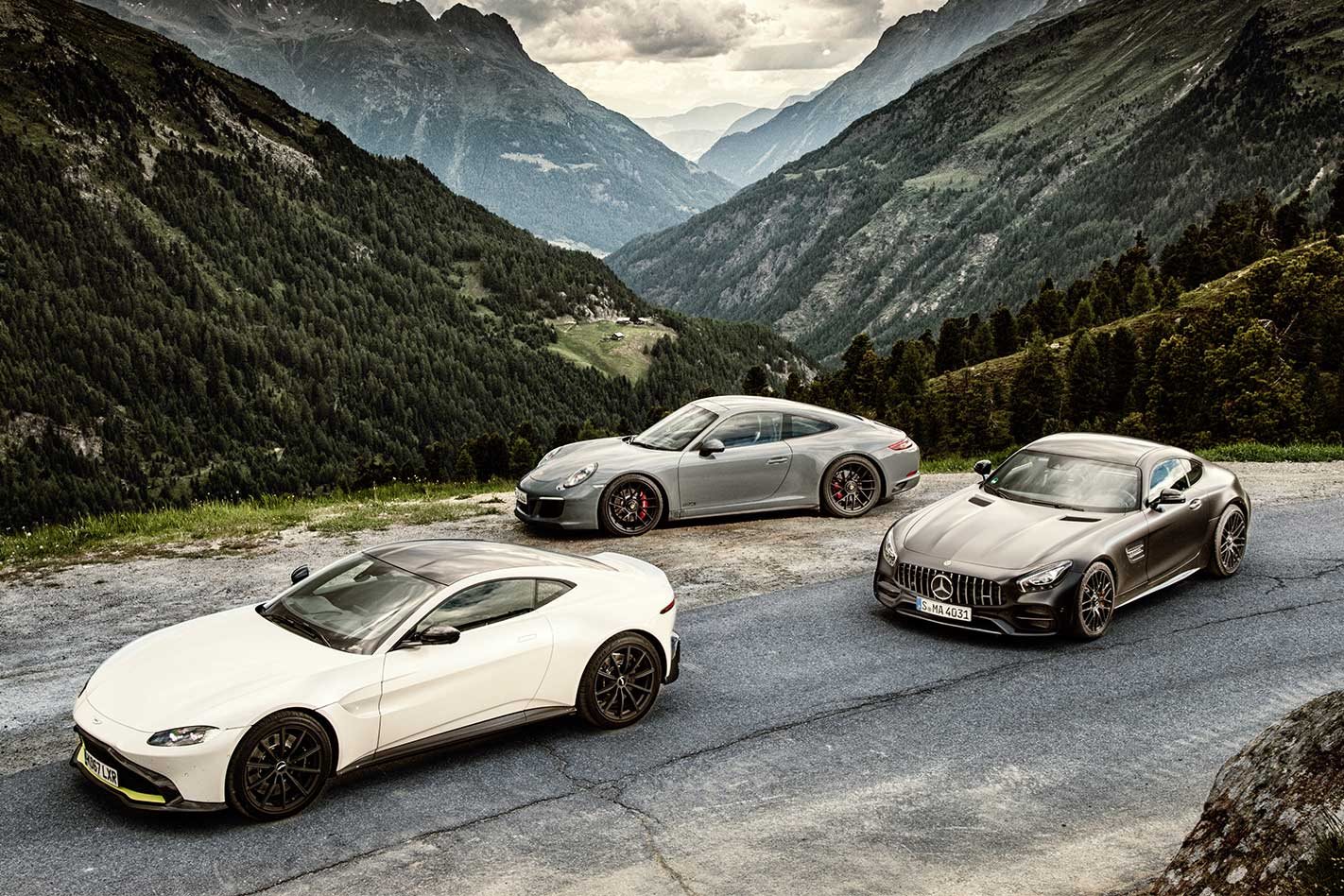Joining the Italian and Austrian Alps is a winding road about as idyllic as you can get for three super coupes. A menacing triple treat (made up of the venerable Porsche 911 Carrera 4 GTS, the hulking Mercedes-AMG GT C and the new kid, the Aston Martin Vantage) sit idle, awaiting a spanking.
However, before the tempo gets serious, we take the chance to explore the lightly trafficked terrain at a leisurely pace; call it a recce run, if you will. Sighting stray cattle and avoiding the gaze of the authorities is paramount.
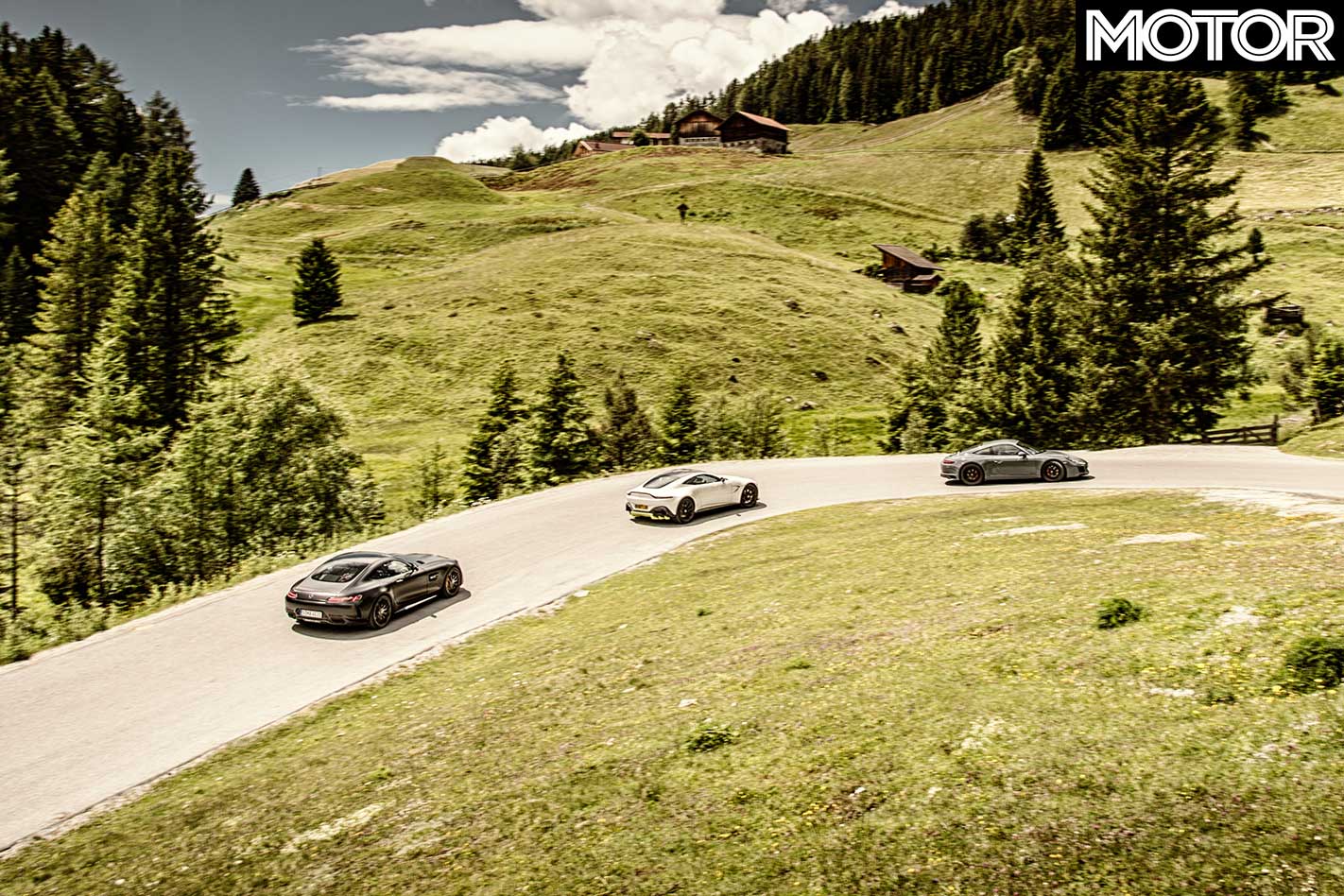
Heading the pack, the Porsche 911 Carrera 4 GTS stampedes away with its trademark upshift histrionics. It’s equipped with dispensable all-wheel drive and indispensable seven-speed PDK. The latter is light years more rewarding than a manual gearbox (yes, we can hear the gasps already).
Next, the new growler from Affalterbach, the AMG GT C, is scrambling itself into position before it takes off and storms away with such a loud noise that children would need earplugs.
Lastly, the even more vocal and melodic metallic white Aston Martin Vantage joins the trio as the newest offering, before it too spirals out of sight, leaving the initial esses behind.
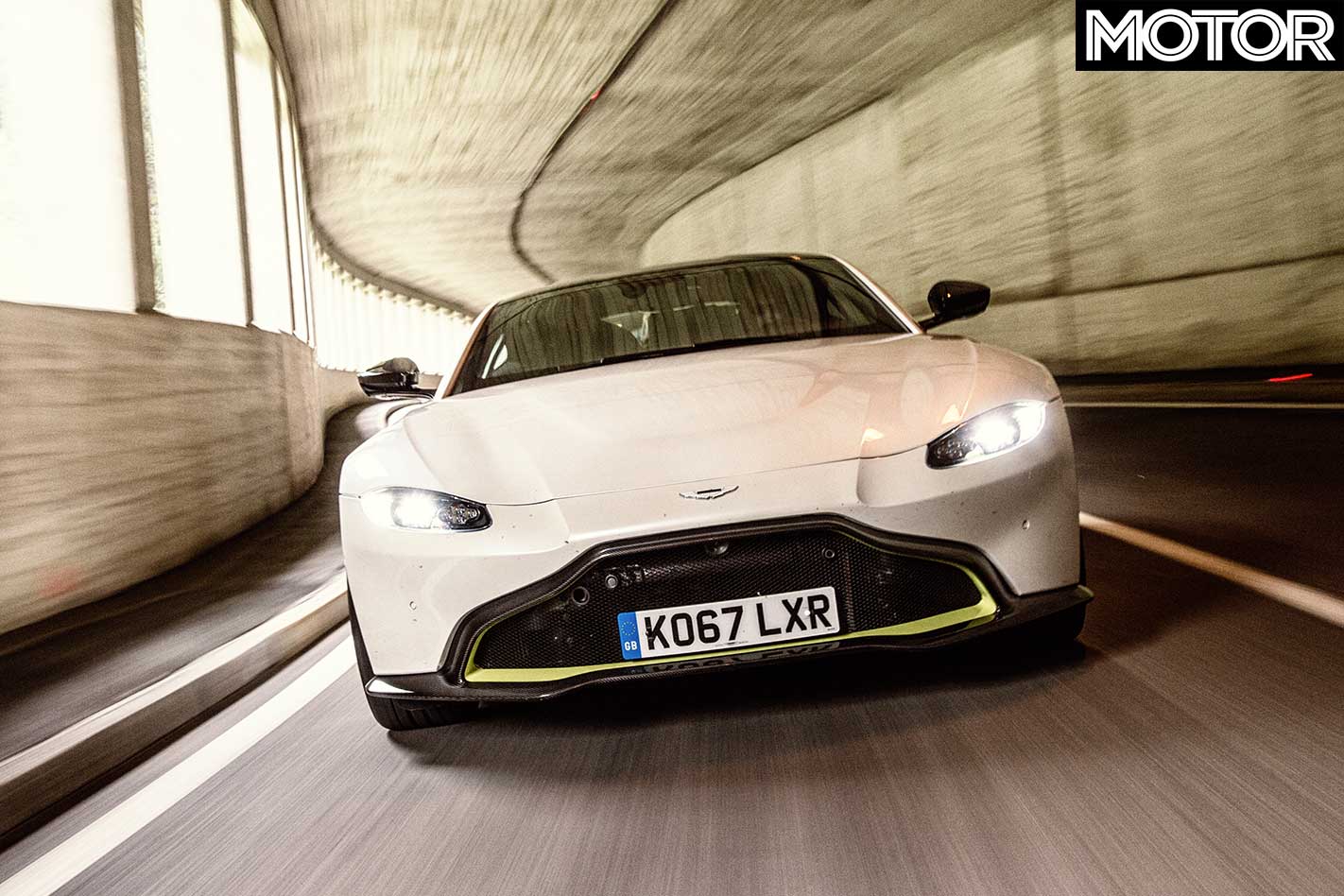
In an ideal world, this comparison would have also included a mid-engined protagonist like the soon-to-be-facelifted Audi R8 or the McLaren 540C, but they weren’t available at the time. While the AMG GT S would be a better fit in terms of raw figures, it can’t hold a candle to our GT C with Dynamic Plus pack and carbon-ceramic brakes.
Unexpectedly, the least expensive combatant is the newest, with Aston’s Vantage coming in at $299,950. Following that is Porsche’s runout 991-generation model before the 992, with the Carrera 4 GTS commanding a $305,990 price tag. The other newcomer, the AMG GT C, is the heavy hitter at $316,500.
Outright performance isn’t the only deciding factor in this comparison. All three contestants are one negligible tenth apart in the dash to 100km/h, with both the Porsche and the Aston sharing a 3.6sec time and the AMG coming in at 3.7sec. Yet, the Merc has the highest top speed at 320km/h.

There’s not much in it as far as power and torque are concerned, either. The twin-turbo flat six lays down 331kW/550Nm, but it propels the lightest car, which carries 130kg less weight than the 1625kg, 410kW/680Nm GT C. Aston claims a dry weight of 1530kg for the 375kW/685Nm Vantage.
Sense of occasion ranks high on the list of buyer motives when you’re spend around $300K on a car. As far as the exterior appearance goes, the sheer presence of the Vantage triggers about twice as many smartphone cameras as the AMG.
The mega Merc is still a sight to behold, but the Aston garners far more love than its mechanically similar rival. Interestingly, no-one even looks twice at the staid, familiar Porsche.

The story changes inside, however. The white wonder is a bit of a disappointment. Ho-hum surfaces, dated ergonomics and uneventful instrumentation abound. The 911 is better made, it also has better seats and a roomier cabin.
The AMG tries to impress with a majestic dashboard, plenty of electronic trickeries and an expensive ambience. However, the seat travel is unnecessarily compromised by the rear bulkhead and the ultra-wide transmission tunnel is a bit of an annoyance in form, function and overall design.
Although all three are fully loaded variants, the 911 lacks the available rear-wheel steering. The Edition 50 AMG arrives in an intimidating all-black outfit, while the Aston has thousands spent on its carbon-fibre jewellery. Complete with a sunroof and comfort seats, the Porsche is kind of an antidote to the big, bad Benz. The Aston sits in the middle, a GT cruiser with the soul of a sports car.
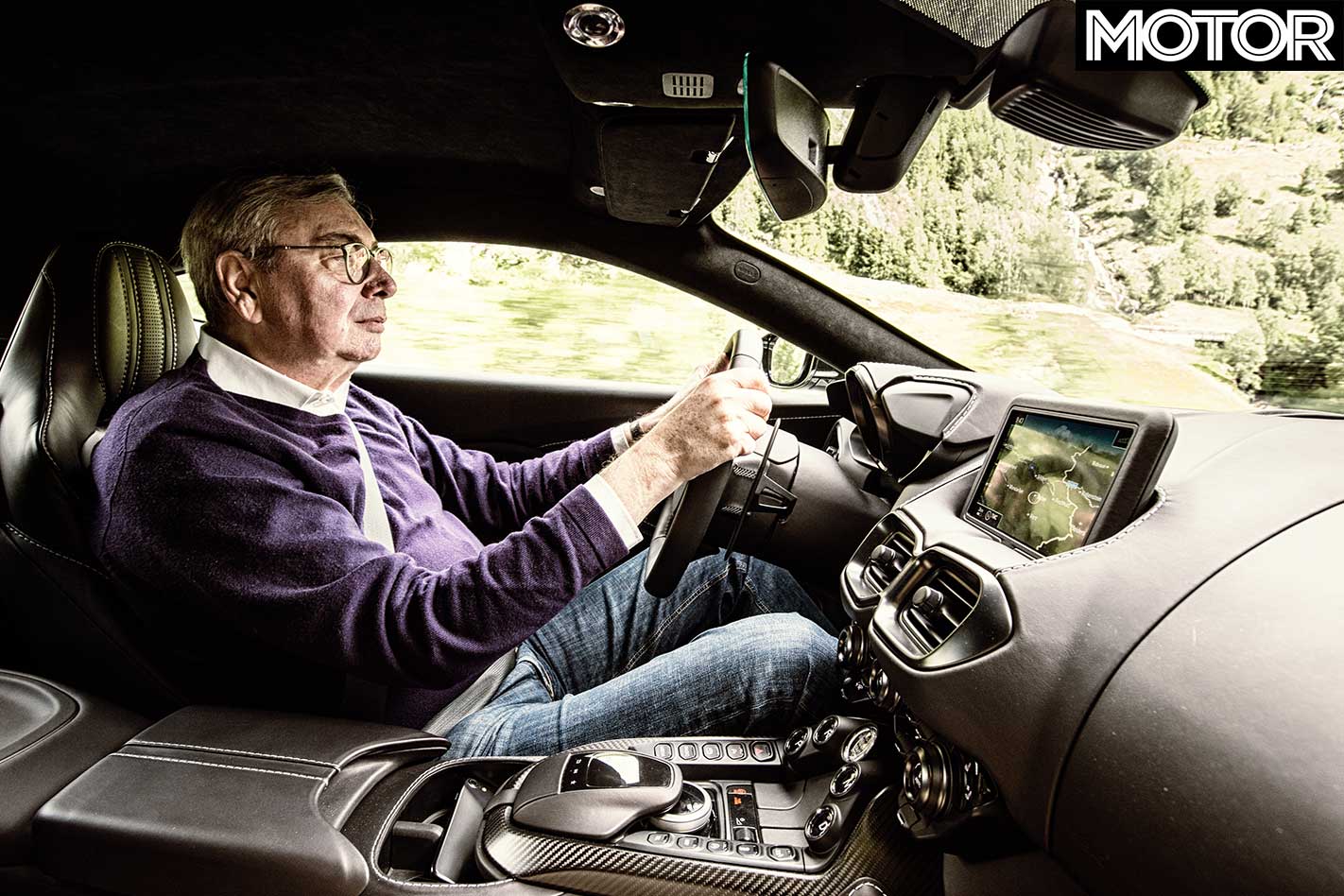
It’s early in the day, and so far the pace is more mildly spirited than attack mode. After all, the Michelins and Pirellis need warming up, the brakes are still grabby from a frosty night and our brains need to fully tap into the experience.
Although visibility is good and you can see for miles ahead in some places, the surface is swathed in all kinds of blacktop. Some corners are off-camber and there’s water from the glaciers sporadically sprinkling the road. Downhill, every section is good for third or fourth gear. Changing up to fifth is feasible, but 200km/h is stretching the friendship with the authorities – even in car-loving Italy.
What does make a lot of difference here is size, weight distribution, engine and transmission characteristic, chassis tuning and the overall driver environment. Not surprisingly, the 911 feels like coming home – after all, it’s been around for yonks.
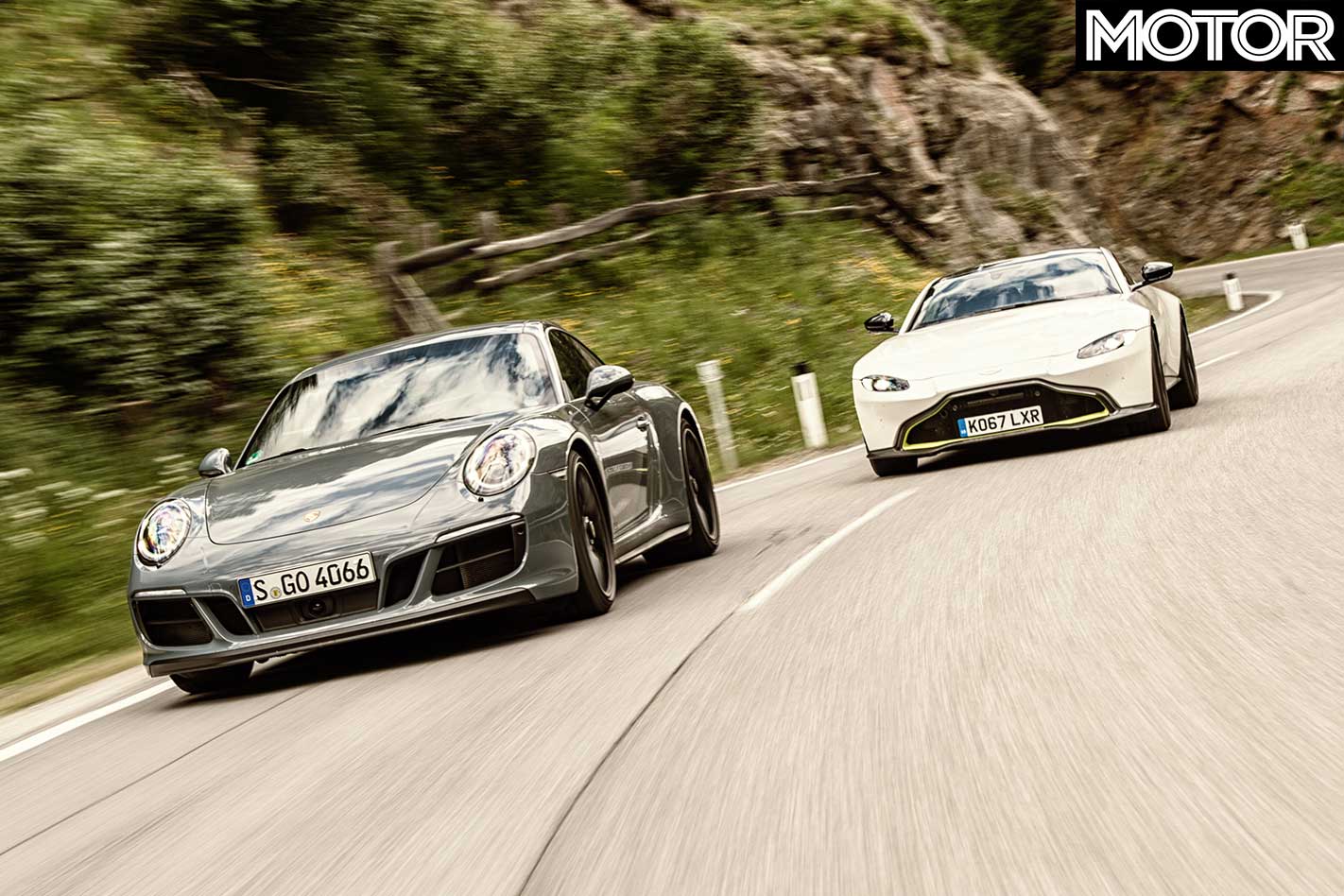
Despite certain updates like the semi-contemporary infotainment system and a choice of driving programs, the rear-engined coupe is still pleasantly old school in the way it looks, feels and does its job. On tight and winding roads, you quickly appreciate the more compact dimensions, the lighter weight and the comparatively comfortable suspension, which has a confidence-inspiring, feel-good factor about it.
To measure up to the GT C, you’d better see a coachbuilder who specialises in extended sizes because this car has a 3XL rear track, shoulders too broad for automatic car washes and an epically long bonnet. The rearward cabin creates a classic coupe silhouette, which is great for cruising down the likes of 5th Avenue (or Chapel Street, Down Under) with the gearbox locked in first gear.
However, as soon as you hit the open road, the margin for error decreases as rapidly as the GT C moves. The Aston isn’t quite as bloated (actually, make that muscular) as the Benz, but it, too, shifts at an astonishing rate as it peppers the wheel arches with noisy gravel picked up from the soft shoulder.
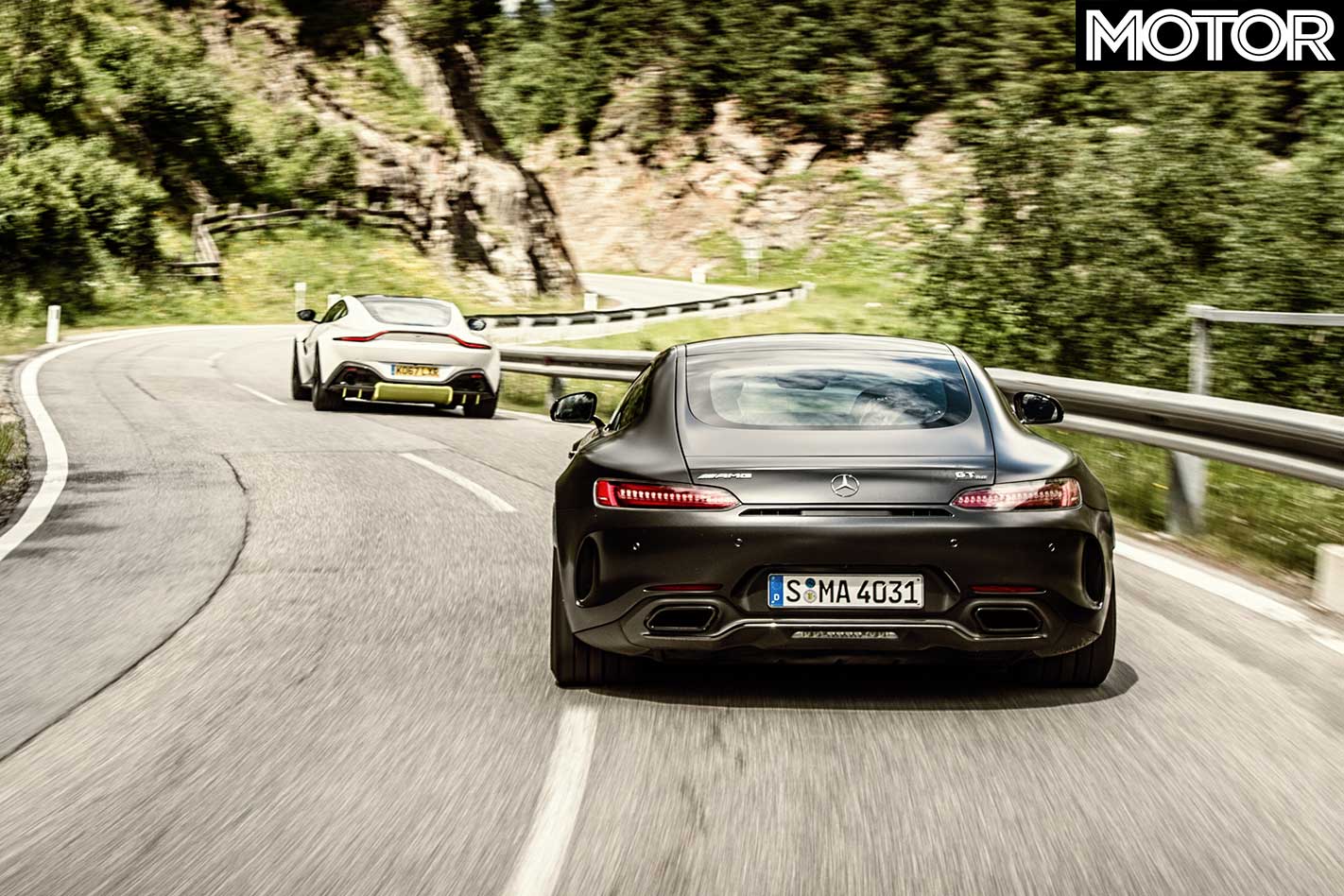
With ESP in handling mode or switched off altogether, both front-engined coupes dance along the edge of adhesion, so a racetrack beckons to really test their wares.
The Aston has the most complete transmission by a whisker. It’s a no-frills, eight-speed transaxle automatic supplied by ZF. It might seem like run-of-the-mill stuff, but it’s a quick-shifting set of cogs, which adapts nicely to the pre-selected modes (Sport, Sport Plus or Track).
The seven-speed dual-clutch fitted to the GT C may be a blink of an eye faster, and it can certainly change gears with greater ferocity, but downshifts tend to be lumpy. And after a hard day’s work, the test car developed an odd take-off hiccup – which was gone the next morning.
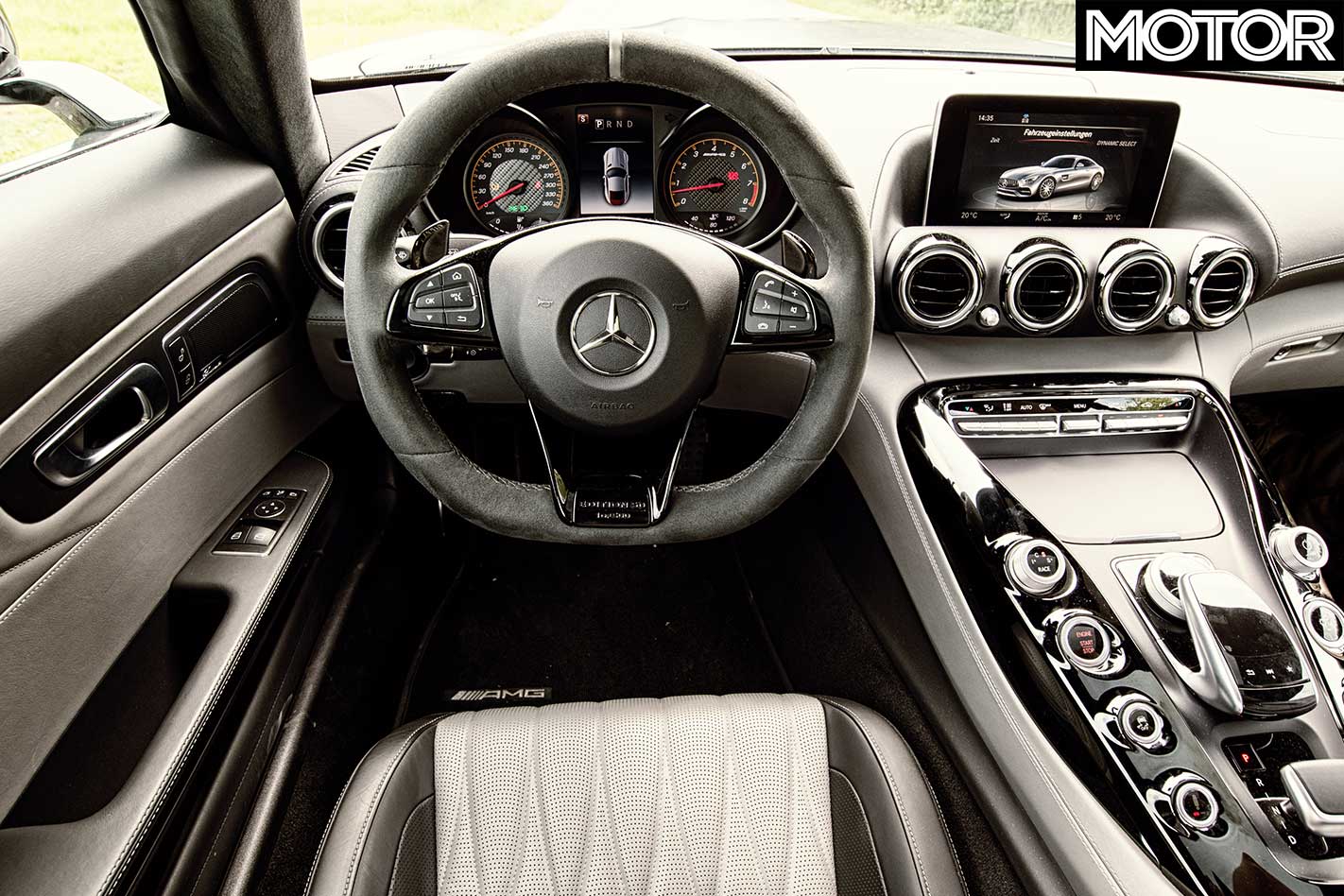
The PDK installed in our 911 has a lot going for it. However, Porsche sadly chose an emissions-based calibration, which selects the tallest gear and goes coasting whenever possible. This might be okay for a VW Golf, but it is at odds in a sports car, despite its prompt response on kick down.
Given the PDK’s behaviour is controlled by the drive mode, selecting Sport or Sport Plus does change the car’s personality markedly. Yet it can go too far and there’s a tendency for it forget it has a fifth, sixth or seventh gear.

Below 2000rpm, none of the three engines are eager to burst into life. However, get closer to redline in all three and the theatre is much more lively – especially in the V8-powered coupes. If you want to frighten your entire street, and not just your next-door neighbour, hit the respective exhaust buttons. The result is absolute unabashed puerility, even though the decibel attack does not quite match the overkill acoustics mustered by the Italians.
Fast descents are a baptism of fire for steering, suspension and brakes – especially the brakes. While carbon-ceramic discs never made much difference in numerous 911s I have driven, the copper-toned high-performance calipers that glisten behind the wheels of the Benz combine amazing stopping power with inexhaustible stamina.
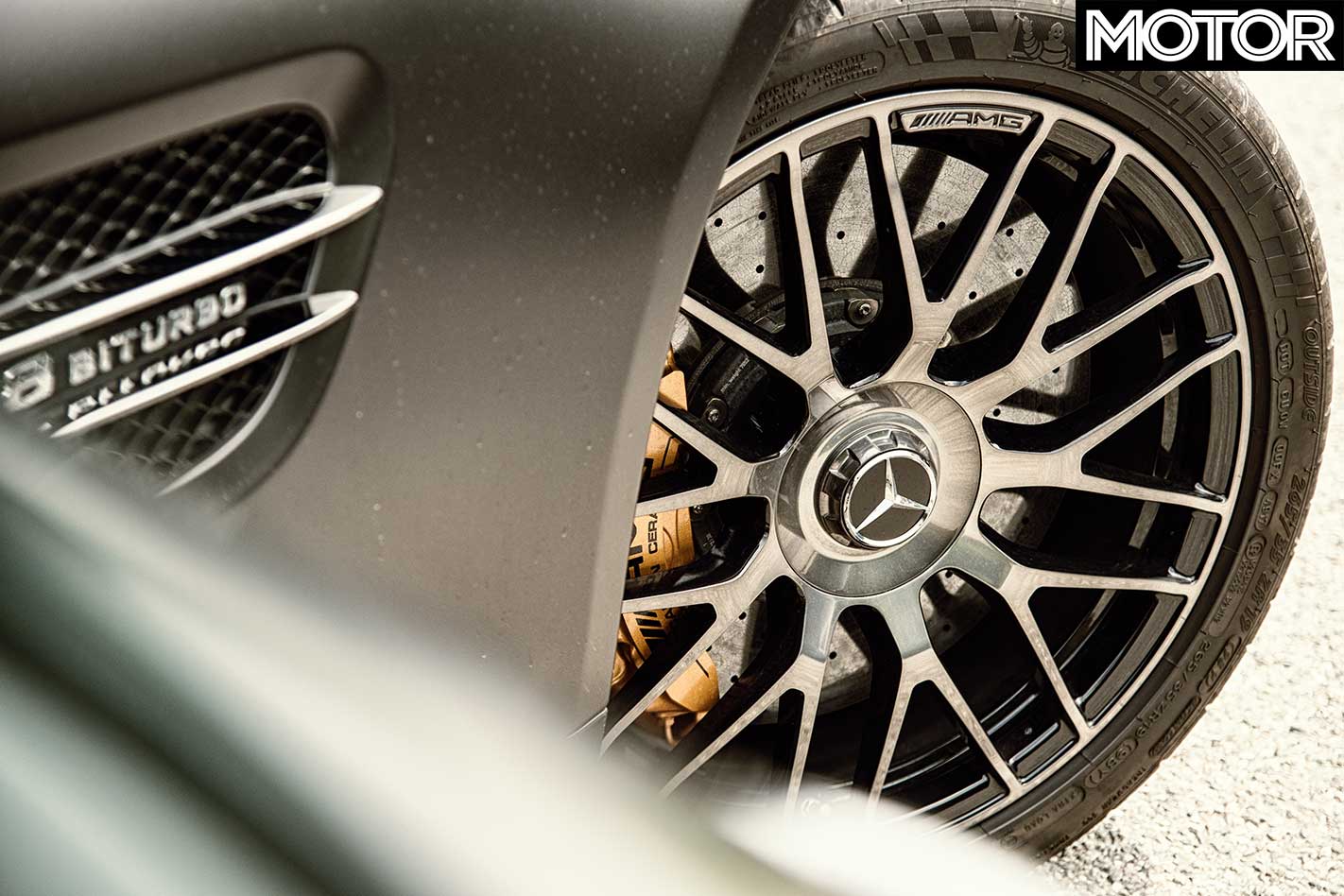
Pedal pressure and travel never vary, and given the front-end turns in without veering off line, braking deep into bends soon becomes second nature. The Vantage does all that, too, but not with quite the same self-abandonment. It requires warm tyres and hot brakes to provide the kind of brutal deceleration that tests your neck muscles.
Juggling mass and momentum is particularly effortless in the Porsche until ABS intervention interrupts play early, which happens quite frequently in this company and is due to the lighter front axle load.
The little turn knob attached to the steering wheel of the 911 GTS offers the choice of four driving modes, plus a boost button. It will, for 20 seconds, unleash even more torque. But unless your commute includes sections of the Nordschleife, this feature is little more than a gimmick.
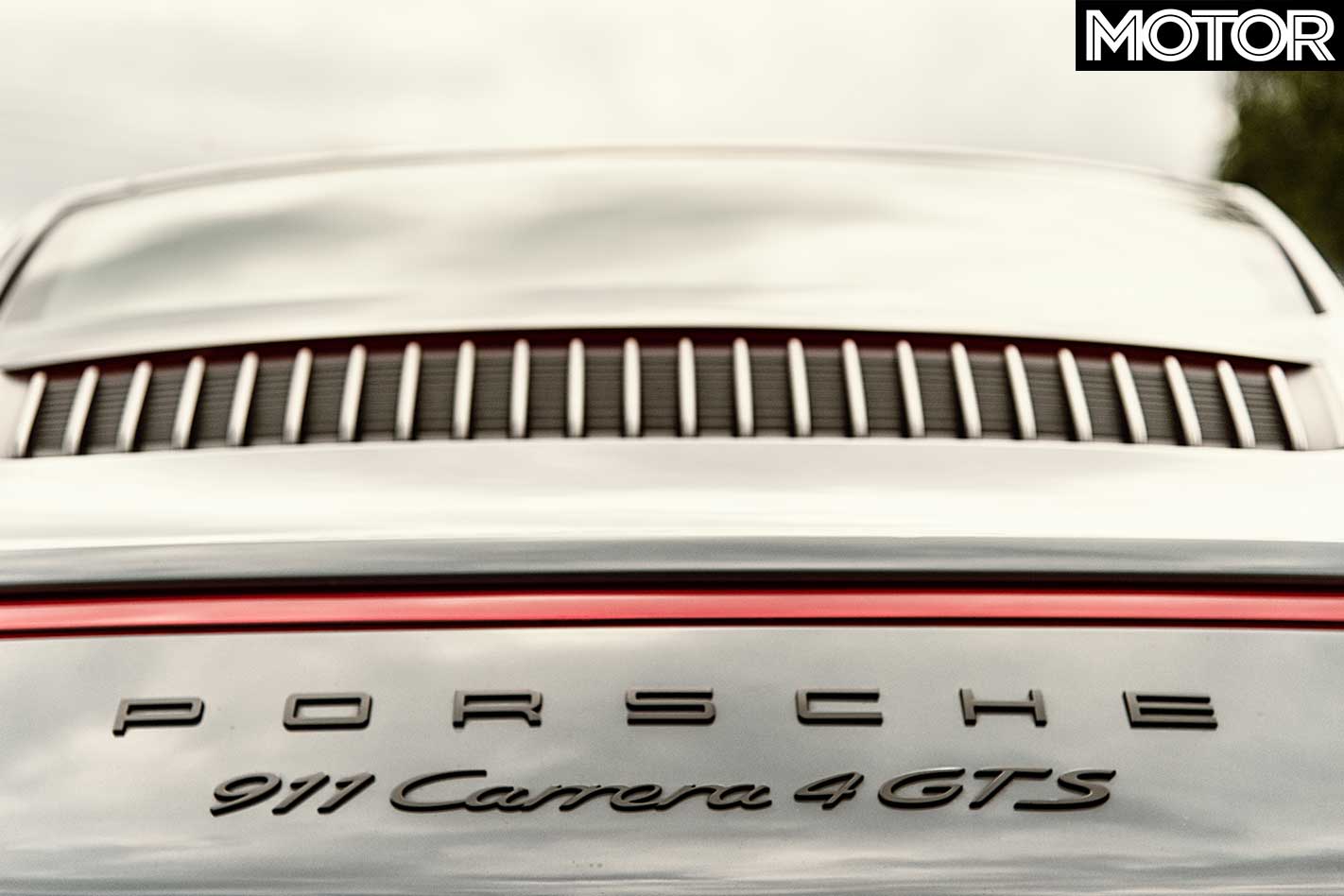
The GT C, too, can be preconditioned by a mode selector in the centre console and via direct-control buttons tweaking the dampers and ESP. Again, the extreme polar opposite settings – Comfort and Race – are of little use for fast stints on back roads.
In principle, the way you calibrate the Vantage’s DNA is the most logical and ergonomically friendly. Access is via two three-way buttons on the steering wheel. One is linked to the dampers, the other to the drivetrain. Sport, Sport Plus and even Track are okay for Sunday blasts, but the ESP needs to be addressed separately via one of 15 buttons grouped around the touchpad and Command controller. Yes, the infotainment system is yet another item supplied by Mercedes-Benz.

With the transmissions in manual, the dampers in Sport and the ESPs relaxed, we arrive at the top of the next pass. On smooth tarmac, there is very little between these three. Leading the understeer chart is, perhaps unsurprisingly, the Porsche. But that’s more down to the Carrera 4 guise, which is more devoted to rocketing you off the line and all-weather traction.
Even with all the electronic interfaces zeroed in, four-wheel drive remains fully active. So power oversteer is a matter of skill, courage and, ultimately, space. You need more of it to catch the front-end, which is prone to run wide before being coaxed into anything akin to a drift. Sadly, although the test car came with lowered PASM suspension and 20-inch wheels, it did not, as already mentioned, have the available rear-wheel steering.
In terms of steering precision, directness, damping and progression, there’s no problem from Affalterbach, Gaydon or Zuffenhausen. But throw in other variables like response, weight and self-centring and the characteristics differ greatly.
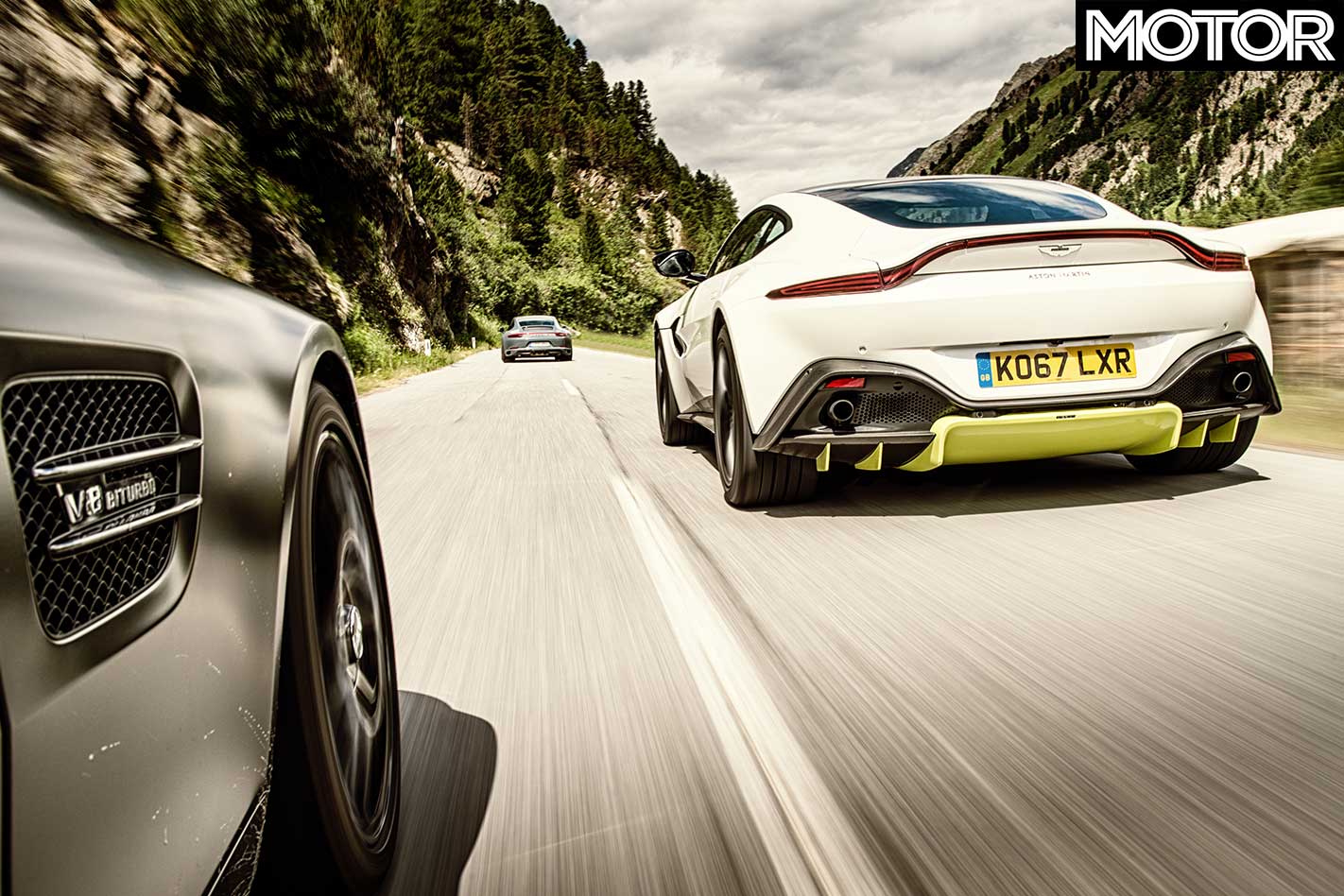
The AMG guys like the helm to be stoic, stable and firm, at least around the straight-ahead position. It makes the GT C feel less wayward on bumpy turf. However, as soon as you turn in with vigour, the hotline between the front wheels and the driver’s hands fades just a little, triggering a dash of indifference and an unexpected lightness.
In the quest for a firmer, more positive feel, we switch to the Vantage – only to frown at its silly quartic steering wheel. The rack, tuned by the Brits and not the Germans, does turn in a tad more progressively, is a touch stiffer and marginally less artificial overall. Having said that, changing direction in the 911 GTS is a more consistent task as there’s no filter; it’s effortless and responsive. It’s the best of the breed on this test.
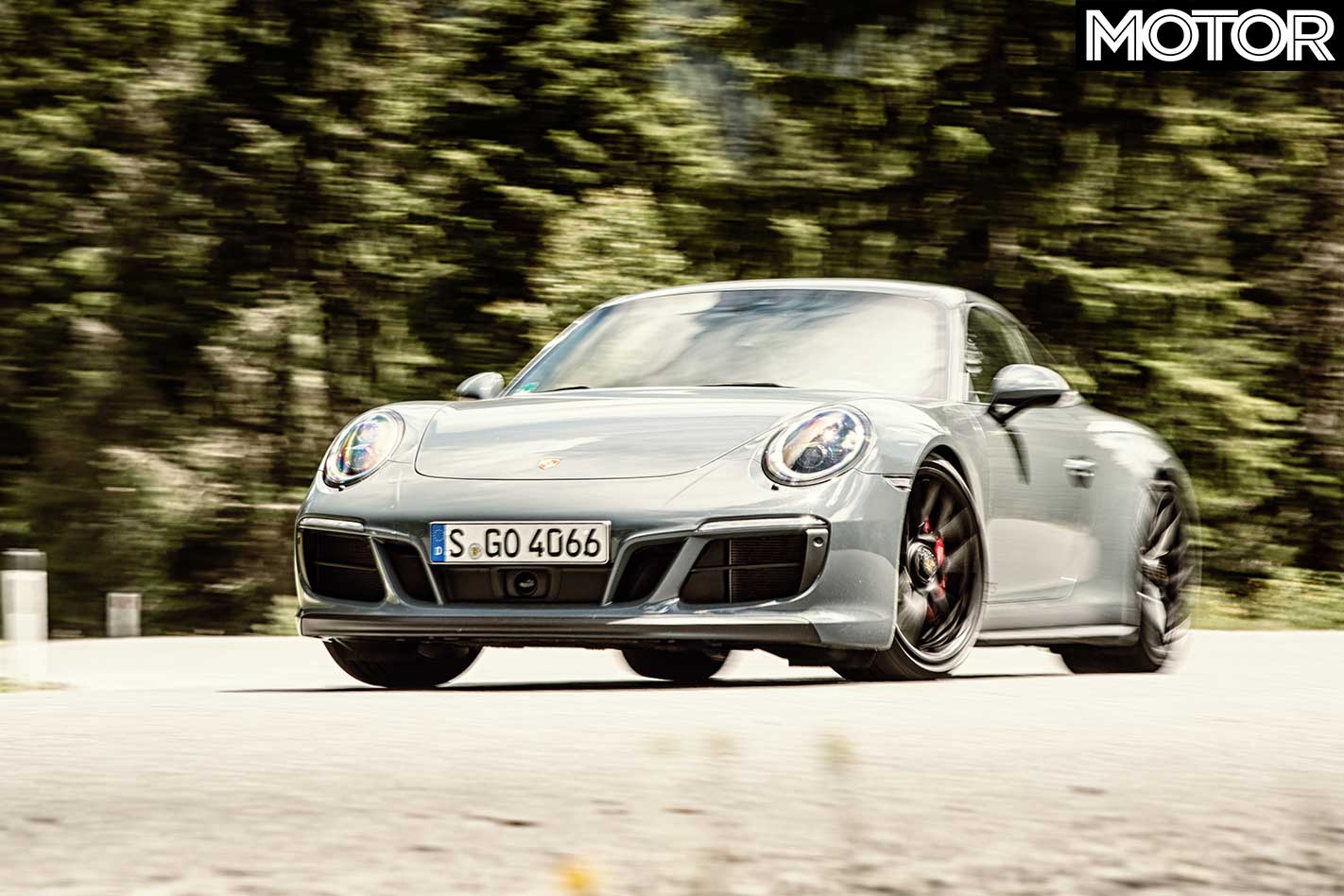
The middle leg of the journey is a true test – the most challenging of the two days. It’s a mixed bag of variables, including wide-open straights, narrow crests framed by the panoramic sky and freshly laid asphalt.
The corners are fast and slow – the weather transitions from drizzle to pristine sunshine. The surface is of note, because on these billiard-table-smooth roads, all three muscled-up coupes score 11 out of 10 for unbridled entertainment and fail-safe driveability.
However, when it’s time to really sort out what’s what when the going gets tough, even the most established player shows incremental cracks in armour. The 911, as nimble and as involving as it is, baulks at deep ripples and patchwork terrain where the front axle acts more restless than it should.

The black beast curtails confidence with a terrible low-speed ride, chronic tramlining and that busy rear axle. The remedy is to work the trick chassis as hard as you can, bringing the long nose into play and extracting all you can from the standard rear-wheel steering and torque vectoring differential.
In more ways than one, the Vantage wants to be the jack of all trades. It catches the eye and makes all the right noises. It feels just at home in racing overalls as it does in a three-piece suit and it rules the fast lane while challenging the best on a twisty road.
But there are caveats. Sans tech wizardry like rear-wheel steering, all-wheel drive, high-performance brakes, active aerodynamics, air suspension and adjustable anti-roll bars, the new Aston is, in essence, a sports car of generations past.
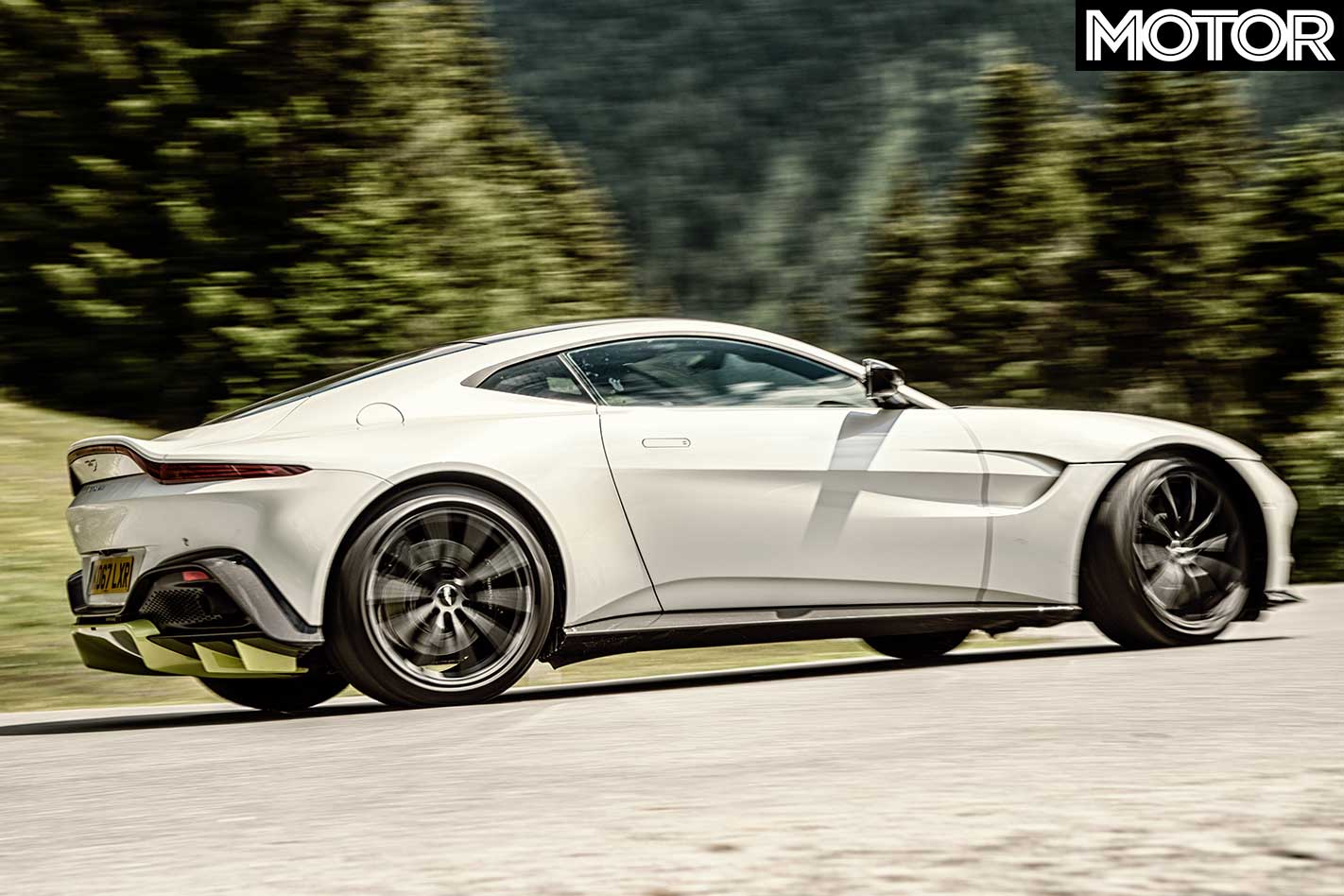
Still, it goes like stink, it wags its tail at every roundabout and it is pure dynamite in the 200-300km/h speed bracket. It genuinely feels fast in the way a 594kW/958Nm Challenger Redeye does. Trouble is the Vantage’s suspension comes across as somewhat undersprung and overdamped.
Crack the whip on curvy, uneven terrain and you better brace yourself for vertical kicks, which make the baby Aston’s rear end tap dance until the ESP cuts in (which is late depending on the mode selected). It needs a tad more compliance to be truly great.
As a finale to the trip, winding our way down into a valley of green is mesmerising. Run after run we turn into the parking spot with sizzling brakes, crackling exhausts and sticky tyres. The reward is a grin that stretches from ear to ear. Picking a winner and a loser out of this pack seems like it’s going to be a tough task. So which is best?
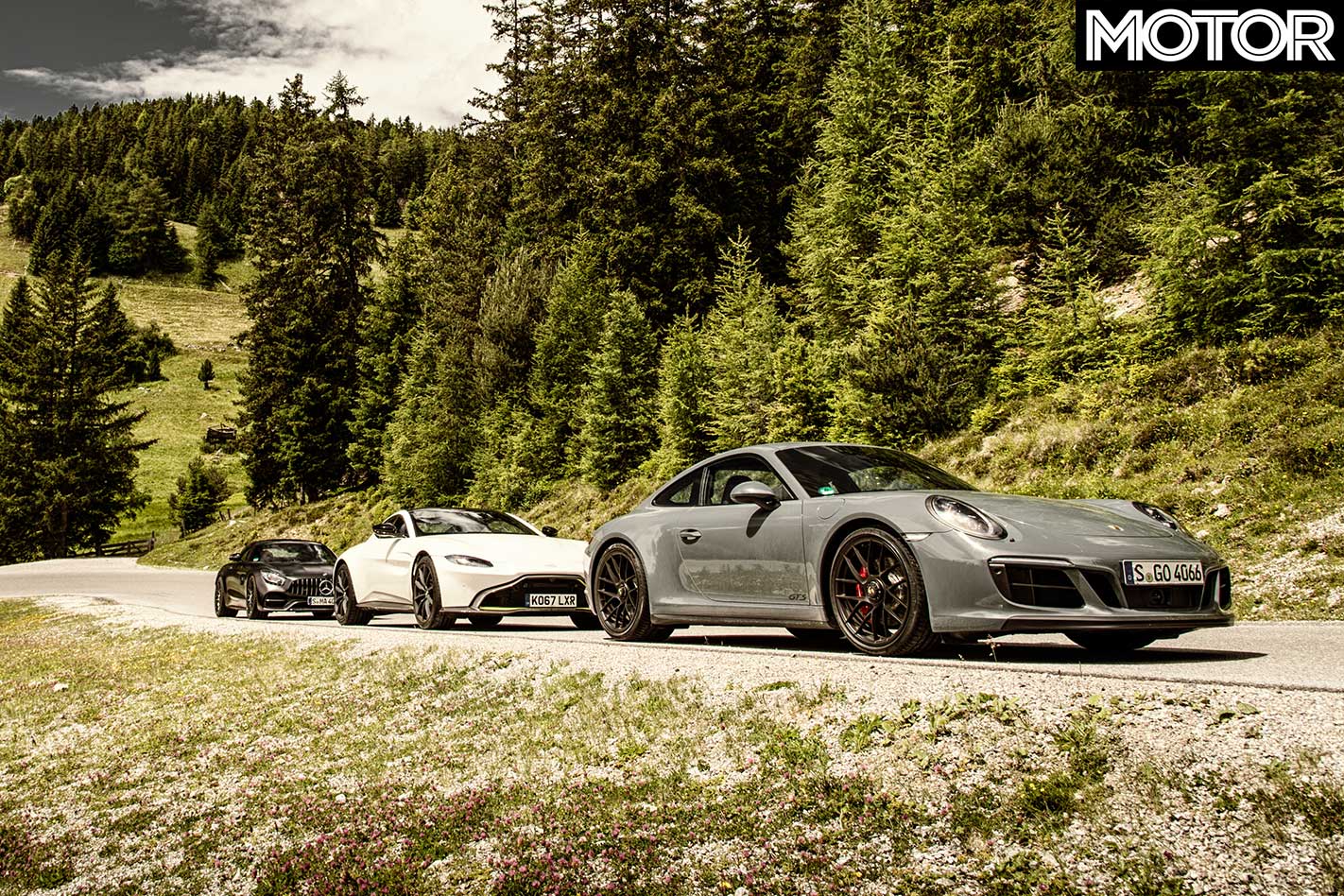
The two V8-engined rivals are close in terms of concept and ability, but the Porsche is a different animal. It applies unique tricks to achieve similar goals. The Vantage isn’t much smaller, lighter or cheaper than the DB11. To qualify for the middle step of the podium it needs a more forgiving ride, a better balanced suspension setup and work done on the interior.
The GT C wins the street-cred debate hands down. It is truly a modern-day muscle car that excels in many areas and it oozes hooliganism the instant you hit the exhaust button. We adore it for that, but it’s not the winner.
That accolade goes to the venerable 911. It’s a true classic, one boasting a timeless design and an impossible engineering concept honed to greatness. True, the Carrera 4 GTS is more underdog than overachiever in this company, and yet it wins by a short head for all the reasons that make this icon so iconic.

| u00a0 | Aston Martin Vantage | Mercedes-AMG GT C | Porsche 911 Carrera 4 GTS |
| Body | 2-door, 2-seat coupe | 2-door, 2-plus-2 coupe | |
| Drive | rear-wheel | all-wheel | |
| Engine | 3982cc V8, DOHC, 32v, twin-turbo | 2981cc flat-6, DOHC, 24v, twin-turbo | |
| Bore x Stroke | 93.0mm x 92.0mm | 91.0mm x 76.4mm | |
| Compression | 10.5:1 | 10.0:1 | |
| Power | 375kW @ 6000rpm | 410kW @ 5750-6750rpm | 331kW @ 6500rpm |
| Torque | 685Nm @ 2000-5000rpm | 680Nm @ 1900-5500rpm | 550Nm @ 2150-5000rpm |
| Power/Weight | 245kW/tonne | 252kW/tonne | 221kW/tonne |
| Transmission | 8-speed automatic | 7-speed dual-clutch | 7-speed dual-clutch |
| Transmission | 1530kg (dry) | 1625kg | 1495kg |
| Suspension (f) | struts, adaptive dampers, anti-roll bar | ||
| Suspension (r) | multi-links, coils, adaptive dampers, anti-roll bar | ||
| L/W/h | 4465/1942/1273mm | 4551/2007/1288mm | 4528/1852/1284mm |
| Wheelbase | 2704mm | 2630mm | 2450mm |
| Tracks | N/A | 1678/1695mm (f/r) | 1541/1544mm (f/r) |
| Steering | electrically assisted rack-and-pinion | ||
| Brakes (f) | 400mm ventilated discs, 6-piston calipers | 390mm carbon-ceramic discs, 6-piston calipers | 350mm ventilated discs, 6-piston calipers |
| Brakes (r) | 360mm ventilated discs, 4-piston calipers | 360mm carbon-ceramic discs, 4-piston calipers | 330mm ventilated discs, 4-piston calipers |
| Wheels | 20.0-inch (f/r u2013 widths N/A) | 19.0 x 9.0-inch (f); 20.0 x 12.0-inch (r) | 20.0 x 9.0-inch (f); 20.0 x 12.0-inch (r) |
| Tyres | 255/40 R20 (f); 295/35 R20 (r) | 265/35 R19 (f); 305/30 R20 (r) | 245/35 R20 (f); 305/30 R20 (r) |
| Tyres | Pirelli P Zero | Michelin Pilot Super Sport | Pirelli P Zero |
| Price | $299,950 | $316,500 | $305,990 |
| Pros | Eye-catching design; V8 soundtrack; handling | Modern-day muscle car; rear-drive dynamics | Steering; overall handling; straight-line pace |
| Cons | Ergonomic interior flaws; indifferent ride quality | Low-speed ride quality; inconsistent steering | AWD not necessary; weight penalty; 992 incoming |
| Rating | 4 out of 5 stars | 4 out of 5 stars | 4.5 out of 5 stars |

